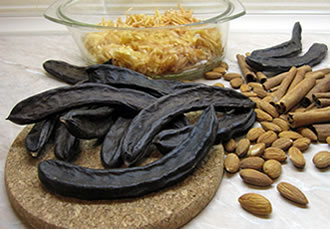
Carob Tree, St. John’s bread, Arabic: خروب, kharrūb; German: Johannisbrotbaum; Greek: χαρουπιά, haroupia or ξυλοκερατιά, ksylokeratia ; Spanish: algarrobo, caroba; French: caroubier, caroube; Hebrew: חרוב ḥaruv; Portuguese: alfarrobeira; Catalan: garrofa; Sicilian: carrubba; Turkish: harnup, keçiboynuzu; Croatian: rogač
Carob tree or Ceratonia siliqua is an evergreen flowing shrub or tree in the pea family , Fabaceae. Carob is native in the Mediterranean region including Southern Europe, Northern Africa, Middle East , in the Canary Islands and Macronesia.
Carob tree can grow from 7 to 10 meters high with canopy reaching to about 20 meters. Carob tree has huge thick trunk with rough brown bark and sturdy branches.. Carob leaves are alternate and pinnate compound, 10 to 25 cm long. The leaves are leathery in texture, dark green and characterized by a thick unilayered upper epidermis showing clustered stomata on the under face. The leaves are frost tolerant and turnovers it leaves during spring time. Carob leaf is usually composed of 8-15 leaflets 3-7 cm and may or may not have terminal leaflet.
Carob flowers blossom in autumn (September to November). The flowers are small and numerous, spirally clustered along the inflorescence axis in catkin-like racemes borne on old wood and even on the trunk (cauliflory). Within the inflorescence the basal flowers open before the apical ones; they are pollinated by both wind and insects. Carob male flowers has characteristic odor, resembling semen
The fruit is a pod that can be elongated, straight or curbed, color is green during the developmental stages, dark brown when ripe. Carob pod takes about 11 to 12 months to develop and ripen. The beans start to change their ground color and usually ripen a month later. Ripe pods fall to the ground and are eaten by various animals thus dispersing the seeds. Humans eat dried or roasted pods instead of the seeds.
Carob is widely cultivated for its edible seeds and pods. Carob is widely used in baking products, snack bars, cereals, cocoa derived products and beverages, dairy products and others. Carob is highly nutritious and offers some medicinal benefits.
Carob has a long history of use. It is used by the early Egyptians as sweetener and was even believed as the food that sustained John the Baptist when he was young thus it is also called St. John's bread.
Active constituents that are found in Carob include the following: calcium, potassium, magnesium, sodium and phosphorus, the most abundant elements in carob fruits were rich sources of carbohydrates, proteins and minerals. The combination of these minerals provide the claimed health benefits of Carob although limited scientific research would support these claims.
Carob for diarrhea. Carob is effective in reducing the duration of symptoms of diarrhea if taken along with oral rehydration solution.
Reduce cholesterol level. Carob with its high fiber content is effective to lower the cholesterol level in the blood. It also improves the ratio ot HDL and LDL in the blood.
Anti-diabetic activity. Carob has insulin lowering capability that may be helpful in manageing type 2 diabetes.
Weight loss. Carob is popularly known as a weight reducing tonic by stimulating the body’s metabolism, improving digestion, and effectively burning and eliminating fats.
Antioxidant. Carob is believed to be rich in antioxidants. It is used to repair and prevent damage to cells by free radicals.
Cancer. Carob is also being considered as a treatment for cervical and lung cancers due to its antioxidant activity.
Anti-fungal and antibacterial activity. A powder made from Carob pods and seeds are used as an anti-fungal, antibacterial agent in treating wounds and other skin disorders.
Analgesic action. Carob is also believed to relieve pain.
Carob can prevent anemia, treat cough and flu
Carob is rich in phosphorous and calcium and is used to prevent and treat osteoclasis and osteoporosis.
Carob Fibers promote healthy cholesterol level
In a study published in “European Journal of Nutrition” in October 2003, theconsumption of food products enriched with carob fibers has beneficial effects on blood lipid profile by reducing the LDL cholesterol level (bad cholesterol) and improving the LDL to HDL cholesterol ratio. This study suggests that consumption of carob fibers may be effective in preventing and treatment of hypercholesterolemia. http://www.ncbi.nlm.nih.gov/pubmed/14569404
Antioxidant activity of polyphenols in carob pods.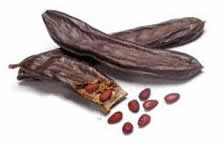
In a study published in “Journal of Agricultural and Food Chemistry” in January 2002, the polyphonols extractedfrom carob pods exhibited a strong free radical scavenging inhibition against the discoloration of beta-carotene. This shows that consumption of carob pods can offer beneficial anti-oxidant activity and is suggested for substantial use for functional food and as food ingredient for animals and human use. http://www.ncbi.nlm.nih.gov/pubmed/11782210
Cytotoxic Activity of Carob flour
A study is done to establish the phytochemical content, antioxidant capability and cytotoxic activities of methanol extracts of the carob tree (Ceratonia siliqua L.) germ flour that was published in "Plant Foods for Human Nutrition" journal in March 2011. It this study, it was found that carob extracts were rich in phenolic compounds that possess antioxidant activity by repairing the free radical damaged cells of the body, while at the same time has the capability to attack cervical (HeLa) cancer cells.
Anti-diarrhea Action of Carob pod powder
In a study that was published in “Journal of Pediatric Gastroenterology and Nutrition” May 1989, entitled “Tannin-rich carob pod for the treatment of acute-onset diarrhea”, it reported that the tannin-rich carob pod powder that was administered to infants suffering from diarrhea showed improved condition after 2 days of treatment. The defecation and body temperature normalized while vomiting were reduced. The study suggested that the carob pod powder has a quick response against diarrhea in infants.
Antidiabetes effects:
In a rat study, addition of 2.5% carob bean gum to an oral glucose tolerance test solution significantly reduced rebound hypoglycemia, dose dependently. In a clinical trial, locust bean gum significantly (p<0.05) decreased the glucose response and glycemic index of subjects with type 2 diabetes when eating a high glycemic index food. Locust bean gum decreased the subjects' insulinemic response and insulinemic index, but not significantly. Carob bean gum had no significant effect on glycemic response in subjects with type 2 diabetes and a BMI >30kg/m2, whereas insulinemic response decreased.
Carob plant is largely cultivated for its seeds and pods. There are a few trees found in the wild particular in eastern Mediterranean regions. Otherwise the commercial grades can be bought in supermarkets or health stores.
Carob is commercially prepared as powdered, chip, syrup, bar and tincture forms. Carob products are vailable in most fitness and health stores. Carob is also available online via Amazon as listed: Carob Powder Toasted, there are other brands to select from, be sure to select one from a reputable manufacturer and do follow the suggested dosage.
Generally safe. Carob is considered safe for most adults if taken in food amounts or as herbal medicine. There are no reported side effects.
Pregnancy and breast-feeding: There are no sufficient studies done to determine the safe use of Carob herbal medicine during pregnancy and breast feeding. It is best to avoid its use.
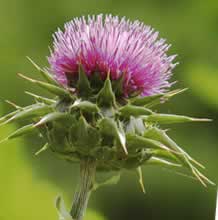 Silymarin extract still tops in liver protection
Silymarin extract still tops in liver protection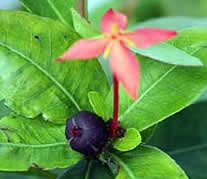 Santan Flower has wound healing properties
Santan Flower has wound healing properties 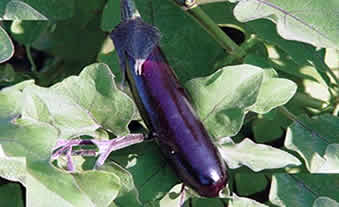 Antioxidant properties from Talong
Antioxidant properties from Talong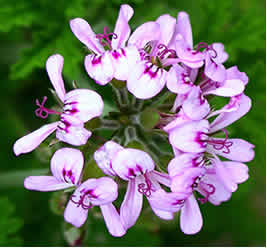 Malvarosa Plant found to have antioxidant properties
Malvarosa Plant found to have antioxidant properties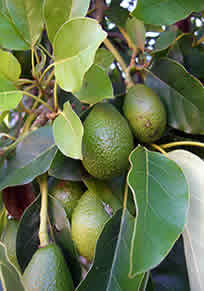 Anti-cancer properties of Avocado fruit
Anti-cancer properties of Avocado fruit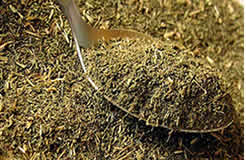 Stevia use can cause cancer, studies suggests
Stevia use can cause cancer, studies suggests